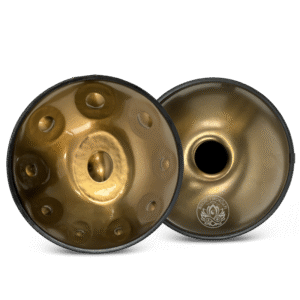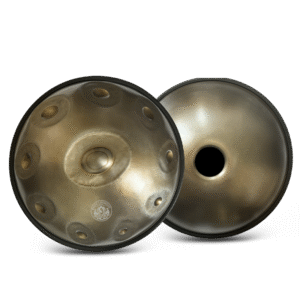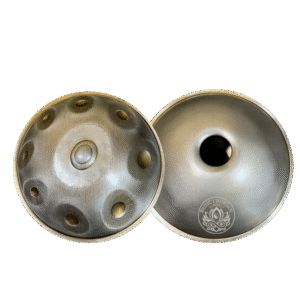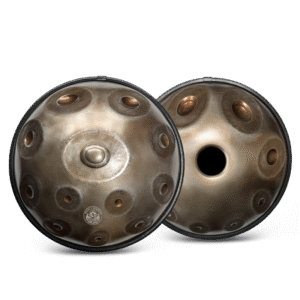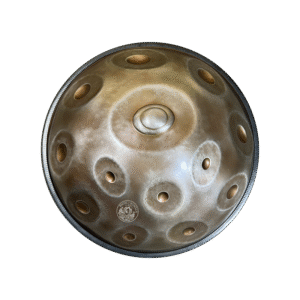Handpan it's an instrument whose magic lies in the very first note. It can enchant and immerse the listener in a space of music and meditation, allowing for relaxation and tranquility almost immediately, without the need for years of music theory study. This is why many people choose the handpan to begin their musical adventure. However, this ease and intuitiveness can also lead to certain pitfalls and mistakes that beginners often make, unfortunately delaying their progress or discouraging them from continuing to play. To avoid these obstacles and enjoy the beauty of its sounds as quickly as possible, it's worth understanding the most common mistakes and how to avoid them. Below is a detailed discussion of five such mistakes, along with practical tips to help you learn to play the handpan effectively.
1. Too hard hitting - gentleness instead of force
One of the most common mistakes is trying to produce a sound by striking too hard. Many people, especially at the beginning, think that the harder they strike, the louder and more beautiful the sound will be. In reality, hard strikes often result in a metallic, unpleasant sound that disrupts the harmony of the entire instrument. Overly hard strikes can also cause permanent damage to the handpan's surface, such as dents or cracks, which detunes the instrument and alters its characteristic sound. Therefore, learning to play gently is key—just lightly touch a note with your fingertips and almost immediately remove your hand, allowing the sound to resonate freely. Imagine your hand touching the instrument as if it were hot, with each stroke quick and precise. This technique produces a clear, full, and sustained sound that captivates the listener and allows you to experience the true magic of the handpan. Learning to balance the strength and softness of your touch is the foundation that will quickly translate into enjoyment and the development of your musical skills.
2. Lack of knowledge of scales and notes - every note matters
Another significant mistake is a lack of thorough knowledge of the instrument—especially the note layout and its specific scale. A handpan isn't a typical instrument, so before you begin improvising, you need to take the time to thoroughly understand the individual notes on your instrument. Understanding the arrangement of notes and the sonic characteristics of each allows you to better control the music and consciously shape the melody. It's worth regularly practicing repeating simple sequences, starting with the central "ding"—the characteristic, main note in the center of the handpan—and the notes surrounding it. The better you master the scale, the faster and easier you'll be able to create your own style and express yourself musically authentically. Learning these basics is an investment that will quickly bring satisfaction and help you avoid the frustration of being lost on the instrument.

3. Learning too fast - basics first
Many beginners tend to rush their learning and immediately attempt complex techniques that aren't appropriate for their level. Unfortunately, this rush leads to bad habits that are difficult to break. A better approach is to start with the basics: learning to produce a sound cleanly, developing a regular rhythm, and repeating simple, repetitive patterns on three notes with a central "ding" in the middle. This calm and gradual work allows you to build a solid foundation, essential for further development, without frustration. The basics are the foundation of harmony and rhythm, which will later naturally develop into more complex melodies. This approach ensures not only effective learning but also true pleasure from playing and the satisfaction of achieving the desired results.
4. No exercise routine – regularity over spontaneity
Consistency is the key to success in any field, and learning to play the handpan is no exception. Many beginners become discouraged when they don't see immediate results or practice irregularly in long sessions followed by long breaks. However, the most important thing is consistent practice, even if it's just 10-15 minutes a day. Such a daily routine allows you to consolidate new skills and develop a habit, which significantly accelerates progress. It's also worth recording short clips of your playing to monitor your development and spot any mistakes that need correction. A consistent time each day dedicated to practice helps maintain regularity and makes playing a natural part of your daily routine. Consistency also provides motivation and allows you to build positive experiences with the instrument.
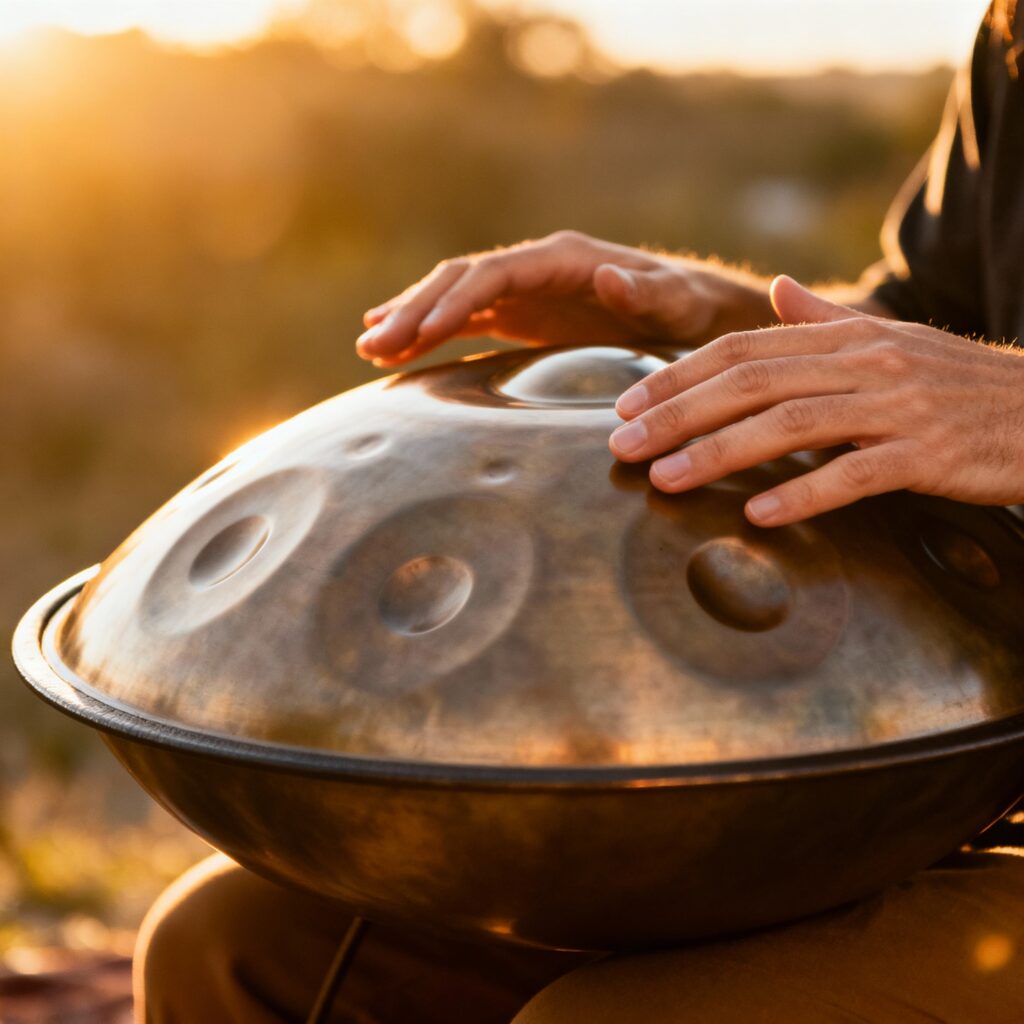
5. Comparing yourself to others and getting discouraged - your own style above all
In the age of the internet and social media, it's easy to fall into the trap of comparing yourself to experienced musicians popular on YouTube or concert stages. Such comparisons are often demotivating, as everyone started from scratch and has their own unique learning path. Instead of focusing on what others are doing, it's worth enjoying your own development and appreciating every bit of progress, even the smallest. Music is, above all, about expressing yourself, your emotions, and your experiences, so finding your own style and enjoying playing is crucial. Over time, your own compositions will emerge, along with increased self-confidence and satisfaction with your acquired skills. Your own path provides far more satisfaction than imitating others.
Order your unique handpan at Miłość i Spokój
If you are looking for an instrument that will not only sound beautiful, but will also be perfectly suited to your needs, we invite you to check out our store offer. In Miłość i Spokój we offer handcrafted handpans, which can be personalized in almost every aspect—from the number of notes (from 9 to even 21), to the choice of scale and individual note layout. Each instrument is crafted with the utmost care by an experienced craftsman who pays attention to detail and harmonious sound quality. Such a handpan is not only a musical instrument, but also a truly unique piece and a work of art that reflects your personality and musical dreams. Personalization offers both aesthetic and musical choices, ensuring everyone will find something for themselves. We invite you to visit our store at https://miloscispokoj.pl/en/handpan-milosc-i-spokoj-shop/ and create your own unique instrument.
Do you have your own experiences learning to play the handpan? Or perhaps questions about customizing your instrument? We encourage you to share them in the comments below—together we're building a unique and inspiring community of handpan enthusiasts!
FAQ – questions and answers
1. How often should I practice playing the handpan?
Ideally, practice for 10-15 minutes daily. Regularity is more important than the length of a single session – systematic exercise brings faster results.
2. Can I order a handpan with an unusual number of sounds?
Yes, the Miłość i Spokój offers full customization—from 9 to 21 note fields in any scale and note layout. The instrument is handcrafted by a craftsman especially for you.
3. Do I need special techniques to play the handpan cleanly?
Yes, it's important to use gentle fingertip strikes and avoid excessive force. Correct technique produces clear, sustained notes and prevents damage to the instrument.
4. How to choose scales and note layout when ordering a handpan?
It's important to choose a scale that suits your musical preferences and goals. You can also consult with us to find the optimal note arrangement for your playing style.
5. Can I learn to play the handpan without any prior musical knowledge?
Absolutely! The handpan is a very intuitive instrument, perfect for those just starting out in music, and with a little patience, it quickly allows you to create your own melodies.


